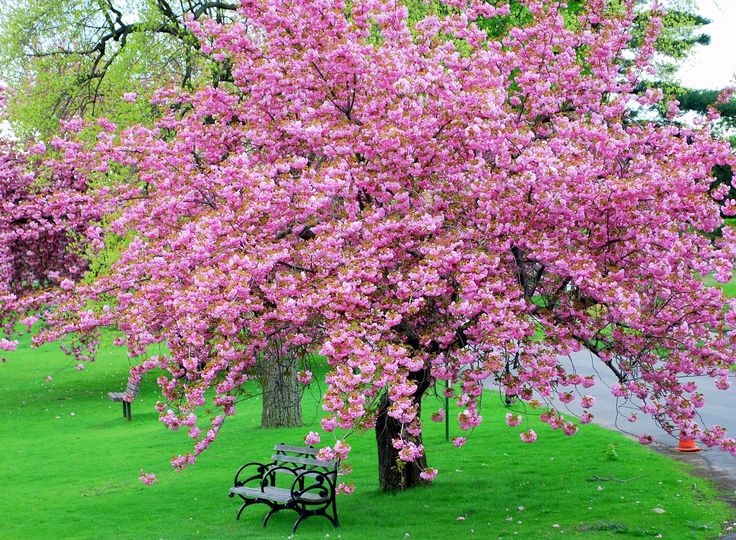Looking to add a burst of colour and life to your garden? Nothing turns heads quite like the beauty of pink bloom trees! Whether you’re after soft pastels or vibrant magentas, these trees offer an irresistible pop of pink that will bring year-round charm to any outdoor space.
Key Points
- Pink bloom trees add vibrant and long-lasting colour to gardens.
- Different varieties suit various climates and garden sizes.
- Proper selection and care ensure maximum blooms and growth.
Why Pink Bloom Trees Are a Garden Favourite
Pink bloom trees are more than just pretty additions to your garden—they’re statement pieces. Whether you’re in the early stages of planning your dream garden or giving an existing one a fresh update, pink bloom trees bring visual drama and seasonal joy. Not only do these trees create gorgeous canopies of colour, but they also signal the arrival of spring with their dazzling blooms. Plus, their varying shades of pink—from soft blush to bold fuchsia—fit a wide range of aesthetics.
Pink bloom trees don’t just look great, though. Many varieties are also hardy, adaptable to different environments, and attract birds and pollinators like butterflies, which can further enhance the beauty of your garden.
Top 10 Pink Bloom Trees for Your Garden
Here are ten stunning varieties of pink bloom trees that are sure to take your garden game up a notch:
1. Kwanzan Cherry
Known for its double-pink blooms, the Kwanzan Cherry tree makes an eye-catching addition to any garden. This tree is as famous for its vivid flowers as it is for its graceful branches, which make it a favourite among landscape designers.
2. Eastern Redbud
Small but mighty, the Eastern Redbud is perfect for smaller spaces. Its delicate pink blossoms appear early in spring, creating a fairy-tale vibe before its heart-shaped leaves fill out.
3. Dogwood (Cornus Florida)
A classic in the world of pink bloom trees, the Dogwood features both flowers and attractive fall foliage. The tree thrives in most temperate climates, making it a reliable option for many gardeners.
4. Crabapple (Malus)
Crabapples are beloved for their spring blossoms and tiny fruits, which are great for attracting wildlife. Their vibrant pink flowers create a stunning focal point in any landscape.
5. Magnolia ‘Jane’
The Magnolia ‘Jane’ brings a splash of dark pink to your garden, with blossoms that appear in early spring. This hybrid variety is great for gardeners looking for a pink bloom tree that’s slightly smaller in size but big in impact.
6. Japanese Flowering Cherry
This tree is the superstar of cherry blossom festivals around the world. Its light pink blooms are a showstopper, making it a must-have for any pink tree collection.
7. Flowering Peach
This tree not only offers gorgeous pink blooms but can also provide fruit. Its striking colour makes it a popular ornamental choice, while its fruit-bearing potential gives it a practical twist.
8. Rosebud Cherry
The Rosebud Cherry tree’s delicate pink flowers make it a spring garden favourite. The blooms are small and clustered, creating an overall impression of a pink cloud in full bloom.
9. Tabebuia
This tropical beauty flourishes in warmer climates, rewarding gardeners with its large, trumpet-shaped pink flowers. It’s ideal for those looking to add an exotic touch to their garden.
10. Taiwan Cherry
Known for its striking hot pink blooms, the Taiwan Cherry tree is a fast-growing species that adds a bold splash of colour. It’s also known to be a favourite of hummingbirds!
How to Choose the Right Pink Bloom Tree for Your Space
When choosing the perfect pink bloom tree, there are a few things to consider:
- Size: Think about the available space in your garden. If you’re working with a smaller area, opt for compact varieties like the Eastern Redbud or Magnolia ‘Jane’.
- Climate: Some pink bloom trees, like the Tabebuia and Taiwan Cherry, do best in warmer climates, while others are more adaptable to cooler temperatures.
- Soil: Different trees have different soil requirements. Crabapple and Dogwood trees, for example, prefer well-drained soil, while others like magnolias may tolerate more moisture.
- Maintenance: Consider the level of care each tree needs. Some trees may require regular pruning, while others, like the Kwanzan Cherry, are relatively low-maintenance once established.
Planting and Caring for Pink Bloom Trees
To ensure your pink bloom trees thrive, follow these simple tips:
- Planting: Spring and autumn are the best times to plant your tree. Dig a hole twice as wide as the root ball, and make sure to position the tree in a spot that gets plenty of sunlight.
- Watering: Keep the soil moist, especially when the tree is young. Once established, many pink bloom trees are drought-tolerant, but regular watering during dry spells is always a good idea.
- Pruning: Prune your tree after its blooming season to encourage new growth and shape the branches.
Grandma Gardens – Your Go-To for Garden Inspiration
At Grandma Gardens, we know how much love and care goes into creating the perfect garden. Whether you’re planting your first tree or refreshing an old favourite, we’re here to help you every step of the way. Visit Grandma Gardens to browse our selection of trees and get expert gardening advice. Whether you’re looking to brighten your space with pink bloom trees or need help with landscaping ideas, we’ve got you covered!
Conclusion
Pink bloom trees are a gorgeous way to add vibrant colour and charm to any garden. With the right variety, a little care, and some thoughtful placement, your garden can become the talk of the neighbourhood. Ready to plant your perfect pink bloom tree? Head over to Grandma Gardens to explore your options and start growing your dream garden today.
FAQs
1. What is the best time to plant pink bloom trees?
The best time to plant is typically in spring or autumn when temperatures are mild.
2. How tall do these trees typically grow?
It depends on the variety, but most pink bloom trees range from 10 to 30 feet tall at maturity.
3. Do pink bloom trees attract bees or butterflies?
Yes, many varieties, such as the Crabapple and Eastern Redbud, are known to attract pollinators like bees and butterflies.
4. Can I grow pink bloom trees in a small garden or container?
Yes! Trees like the Magnolia ‘Jane’ and Eastern Redbud are perfect for smaller spaces or containers.
5. What is the average lifespan of pink bloom trees?
On average, these trees can live anywhere from 20 to 50 years, depending on the species and care.

